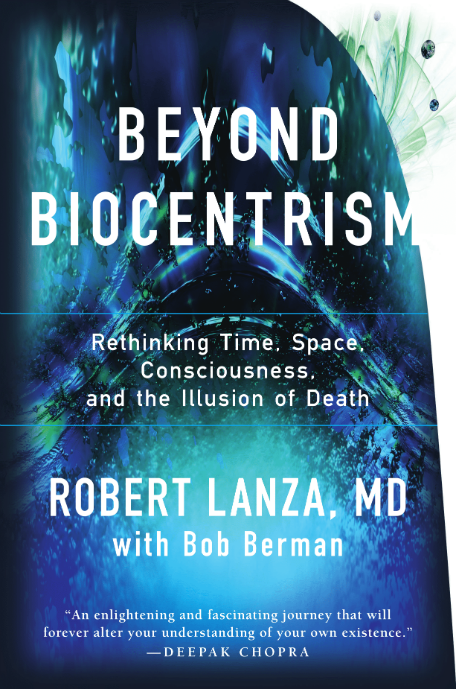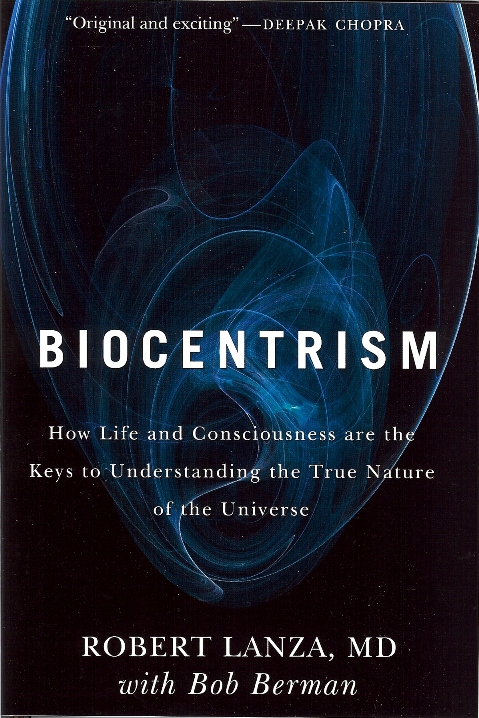
The question, “What is it like after you die?” can make you wonder about taking the time to ponder such philosophical babble. You might reply, “The only way to know is when you die.” Not so. You won‘t know any more than you do now. Increasingly, scientists are beginning to realize that an infinite number of realities may exist outside our old classical way of thinking.
The mystery of life and death cannot be examined by visiting the Galapagos or looking through a microscope. Even Einstein realized this isn’t the case.
Our instinctual understanding of reality is the same as most other animals. This came into focus the other day as I strolled though a nearby field, stirring up butterflies and creatures of all shapes and colors. There were wildflowers that were brilliant yellow, some that were red and others that were iridescent purple. This colorful world of up-and-down was the extent of my reality. Of course, to a mouse or a dog, that world of reds, greens and blues didn‘t exist anymore than the ultraviolet and infrared world (experienced by bees and snakes) did for me. In fact, some animals, including birds, possess magnetoreceptors that allow them to perceive information on the quantum level (indeed, some have even speculated that bees perceive a 6-dimensional reality to encode location information).
But regardless of these differences, we genome-based creatures all share a common biological (spatio-temporal) information-processing ability. I‘ve previously written how reality isn‘t a hard, cold thing, but rather an active process that involves our consciousness. According to biocentrism, space and time are simply the tools our mind uses to weave information together into a coherent experience — they are the language of consciousness (in fact, in dreams your mind uses the same algorithms to create a spatio-temporal reality that is as real, 3-D and flesh-and-blood as the one you‘re experiencing now). “It will remain remarkable,” said Nobel physicist Eugene Wigner, referring to a long list of scientific experiments, “that the very study of the external world led to the conclusion that the content of the consciousness is an ultimate reality.”
At death there‘s a break in our linear stream of consciousness, and thus a break in the linear connection of times and places. Indeed, biocentrism suggests it‘s a manifold that leads to all physical possibilities. More and more physicists are beginning to accept the “many-worlds” interpretation of quantum physics, which states that there are an infinite number of universes. Everything that can possibly happen occurs in some universe. Death doesn‘t exist in these scenarios, since all of them exist simultaneously regardless of what happens in any of them. The “me” feeling is just energy operating in the brain. But energy never dies; it cannot be destroyed.
So what‘s it like when you die? Of course, during our lives we all grow attached to the people we know and love and can never image a time without them. I subscribe to Netflix and recently went through all nine seasons of the TV series “Smallville.” I watched two or three episodes every night, day after day, for months. I watched Clark Kent (Tom Welling) grow up and go through all the normal growing pains of adolescence, young love and family dramas. He, Martha Kent (his adoptive mother) and all the other characters became part of my life. Night after night I watched him use his emerging superpowers to fight crime as he matured, first attending high school and then college. I watched him fall in love with Lana Lang (Kristin Kreuk), and then become enemies with his former friend Lex Luthor (Michael Rosenbaum). When I finished the last disk, it was like they had all died — it was all over.
Despite my sense of loss, I reluctantly tried a few other TV series, eventually stumbling upon “Grey‘s Anatomy.” The cycle started over again with completely different people. By the time I had finished all seven seasons, Meredith Grey (Ellen Pompeo) and her fellow doctors at Seattle Grace Hospital had replaced Clark Kent, et. al as the center of my world. I became completely caught up in the swirl of their personal and professional passions. In a very real sense, death is much like finishing a good TV series, whether “Grey‘s Anatomy,” “Smallville” or “Dallas,” except the multiverse has a much bigger collection of DVDs than Netflix. Just like at death, you change reference points. It‘s still you, but you experience different lives, different friends and even different worlds.
Think of a football field full of stacks of DVDs piled up to the sky. At death, you‘ll even get to watch some re-makes — perhaps in one, you‘ll get that dream wedding dress you always wanted, or a doctor cures the disease that caused your loved one to die. The story goes on even after J.R. gets shot. Our linear concept of time means nothing to nature.
As for me, I still have Season Eight of “Grey‘s Anatomy” to look forward to.
Robert Lanza has published extensively in leading scientific journals. His new book “The Grand Biocentric Design” lays out his theory of everything.


But that was just the beginning.
—Deepak Chopra "Beyond Biocentrism is a joyride through the history of science and cutting-edge physics, all with a very serious purpose: to find the long-overlooked connection between the conscious self and the universe around us."
—Corey S. Powell, former editor-in-chief, Discover magazine


—Nobel Prize Winner E. Donnall Thomas
